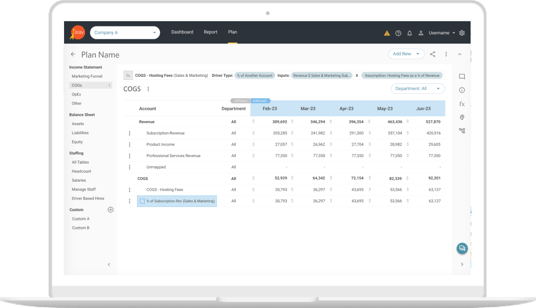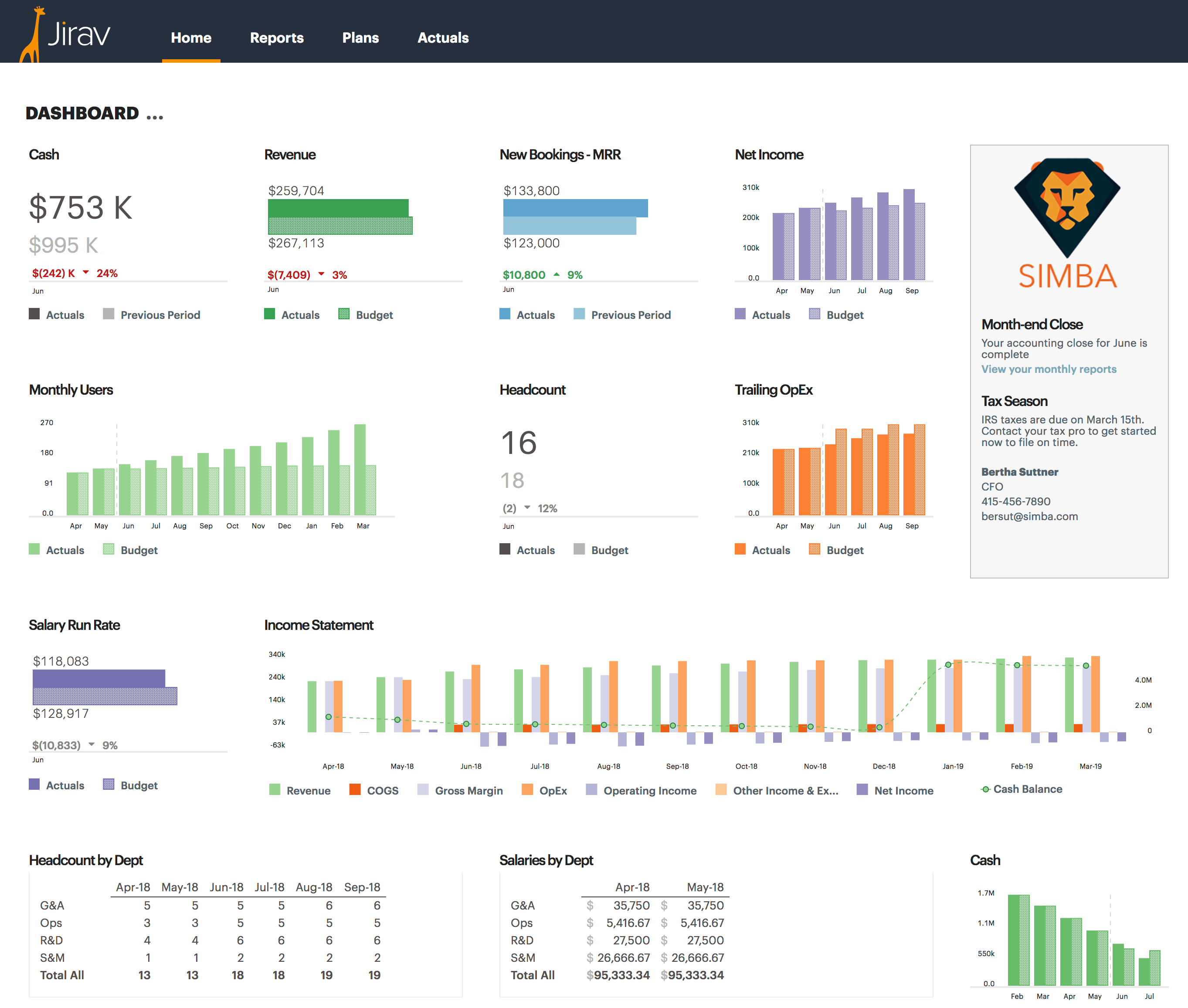Gone are the days when finance management was just about keeping the books straight and monitoring expenses. These days, it involves problem-solving and identifying collaborative opportunities, as well as designing guides and outlining growth initiatives to help companies achieve their goals.
In modern finance, the role of the CFO has evolved to include strategist and technology expert; instead of spending most of their time on low-value tasks, finance professionals focus more on critical, strategic and operational decisions to improve business performance.
By building a strategic finance operation, businesses can leverage the latest technology to free up time and resources, proactively using data and strategy to grow their businesses and reach their goals.
This guide will provide insights into how modernizing your financial team and processes will enhance a proactive, forward-looking approach.
- What Is Strategic Finance?
- The Difference Between Strategic Finance and FP&A
- Strategic Finance Management: Role Profile at a Glance
- Strategic Finance Solutions: What to Look for in a Consulting Firm
What Is Strategic Finance?
Strategic finance is a proactive approach to financial decision-making that places achieving the company's long-term objectives as a top priority.
Strategic finance uses analysis to inform decision-making and ensure financial resources are shrewdly allocated to achieve long-term success.
No matter the size, adopting strategic finance helps businesses mitigate risks and create sustainable financial strategies that provide a meaningful return on investment (ROI).
Traditional finance centers on analyzing past financial performance and making decisions based on historical data.
However, the three-statement model - balance sheet, cash flow, and income statement - is no longer sufficient to support the strategic, financial decision-making required in today's dynamic business landscape.
Today, high-growth companies rely on a plethora of SaaS tools to operate their businesses, including enterprise resource planning (ERP), marketing suites, customer relationship management (CRM), human resources (HR) systems, payment systems, and more.
Since finance leaders are not often involved in the day-to-day operations of other departments, they tend to be unaware of significant financial implications that could affect the company's long-term growth.
Similarly, operational data is often analyzed on a monthly or quarterly basis, necessitating that businesses play catch-up with their strategic needs.
This is where strategic finance comes in.
By incorporating real-time, operational data into financial analysis, businesses can make more informed decisions that are aligned with their strategic objectives.
This approach allows businesses to move from reactive financial analysis to proactive analytics that support their long-term growth plans. Businesses can use strategic analysis to create a financial forecast, by examining current operational issues before building an action plan.

The Difference Between Strategic Finance and FP&A
Many companies still rely on traditional Financial Planning and Analysis (FP&A) methods for many reasons. While FP&A may have played a pivotal role in helping finance professionals evolve from being mere scorekeepers to becoming valued advisors in corporate development, it can be siloed, limiting collaboration within organizations.
With the advent of SaaS-driven technologies and increasingly complex business processes, strategic finance provides forward-looking insights based on real-time data and integrated platforms that act as intelligent building blocks for financial models.
Strategic Finance and FP&A are both critical functions in finance, but they differ in their scope and the tools they use:
- Tools & Software: FP&A has relied heavily on Excel spreadsheets to build budgets and forecasts; strategic finance uses an integrated software system that provides real-time financial data, multiple-scenario-functionality, and advanced analytics tools to increase profitability and achieve strategic objectives, including revenue growth, market-share gains, spend management, supply-chain management, and cost reduction.
- Goals: While FP&A focuses on building short-term budgets and long-term financial forecasts for business plans, strategic finance expands business intelligence, using real-time data analysis to make informed decisions and develop business strategies.
- Metrics: FP&A analyzes financial metrics like revenue, profit margins, and cash flow. In contrast, strategic finance goes beyond numbers and examines non-financial metrics like market share, customer satisfaction, and employee productivity.
- Time Horizon: Typically, FP&A focuses on short-term budgeting and financial planning, while strategic finance has a broader scope and focuses on long-term business growth and cost reduction.
- Scope: FP&A is a narrower function, focused on financial analysis and planning by building financial models and creating budgets and forecasts to analyze data and generate reports. In contrast, strategic finance uses key performance indicators (KPIs) and real-time dashboards to monitor progress and adjust strategies as necessary.
- Accessibility: Unlike FP&A, strategic finance focuses on presenting financial data in a way that the entire organization can understand. This approach makes financial data accessible to all stakeholders, providing a more holistic view of the business.
While both strategic finance and FP&A are crucial functions within a company's financial management, by relying on FP&A, organizations run the risk of being stuck with a backward-looking finance function that relies on decentralized data and cumbersome manual processes.
Strategic Finance Management: Role Profile at a Glance
Strategic finance requires a broad range of skills, including financial analysis, strategic thinking, and communication. The following are some key responsibilities of a Strategic Finance Manager:
- FP&A: Developing and implementing financial plans that align with the company's long-term goals and objectives is a given. This includes forecasting, analyzing data, and developing strategies to optimize financial performance.
- Budget Management: This involves managing finances to ensure the company operates within its financial means and doesn’t exceed its budget. This includes ensuring that financial resources are smartly allocated across different departments and projects, assessing the financial viability of various projects and initiatives, and identifying opportunities to cut costs.
- Risk Management: This includes identifying and mitigating financial risks that could impact financial performance, including market, credit, and operational risks. Developing a robust risk-management framework and implementing effective risk-management strategies helps protect financial assets and expand goals.
- Performance Measurement: This entails developing and implementing performance metrics to track the financial performance of the company and identify areas for improvement. This role facilitates collaboration with other departments and stakeholders across the organization and involves working closely with departmental heads and senior management to align financial strategies with the company's broader goals and objectives.
- Stakeholder Management: Managing the company's financial relationships with external stakeholders like investors, creditors, and regulatory bodies includes preparing financial reports and statements, communicating performance to stakeholders, and ensuring compliance with financial regulations and standards.
- Market Analysis: In addition to these core responsibilities, a Strategic Finance Manager must have a deep understanding of the industry and market trends, as well as the company's competitive landscape.
.webp?width=2872&height=1838&name=New%20Jirav%20Mockup%20(1).webp)
Strategic Finance Solutions: What to Look for in a Consulting Firm
In today's competitive business environment, companies are increasingly relying on consulting firms to provide strategic financial solutions that can help them achieve their goals and drive long-term growth.
From FP&A to risk management and investment strategy, consulting firms offer a range of services that can help companies navigate complex, financial challenges.
The sheer number of seemingly-qualified consulting firms can make the choice overwhelming. Here are some factors to consider when making a decision:
- Expertise and Experience: The first thing to look for in a consulting firm is a proven track record of delivering high-quality, strategic, finance solutions to clients in your industry. For example, over 4,000 organizations rely on Jirav software for their financial planning, which enables the platform to constantly refine integrations to give businesses instant access to key insights and meet unique business needs.
- Range of Services: When selecting a consulting firm, an ideal choice should offer a variety of strategic finance solutions that include financial planning automations, like financial modeling and forecasting, budgeting, risk management, and investment strategy. Having access to a wide range of solutions will allow you to leverage the expertise opportunities that drive your financial planning initiatives forward.
- Customization and Flexibility: It’s important to work with a company that can provide solutions for your unique needs. Similarly, you should prioritize solutions that help you adapt to changes in your business environment and adjust your approach accordingly.
- Communication and Collaboration: Look for a firm that has a team of experts who are easy to work with, responsive, and able to communicate complex financial concepts in a clear and concise manner. A good consulting firm should also be willing to collaborate closely with your team and take into account your input and feedback throughout the process.
- Value for Money: Take stock of pricing, deliverables, and commitment to delivering high-quality results, to determine a firm's reputation and evaluate their value proposition.
Ultimately, strategic finance is the key to unlocking the full potential of finance professionals in today's SaaS-driven world. Selecting the right consulting firm to simplify your FP&A is key for business success.
With its cutting-edge technology and commitment to delivering quick insights, Jirav offers the best solution for streamlining your FP&A processes. Through accurate forecasts and budgeting, you can compare financials with one click and make informed, data-driven decisions that will drive long-term growth.
Don't take our word for it - BOOK A DEMO today, and get ready to win your next strategy.












